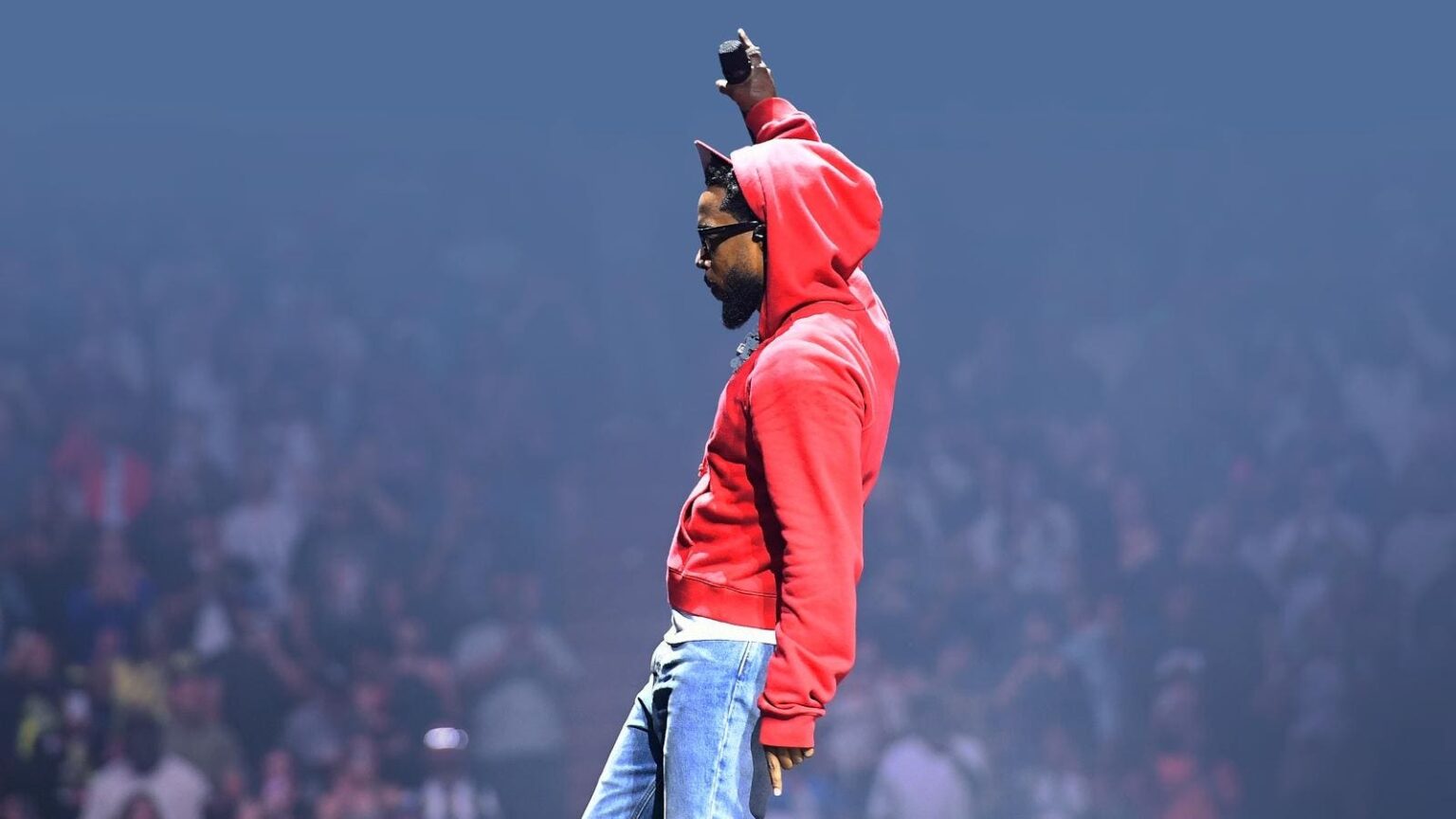Feuding with Drake turned the ‘Not Like Us’ performer into hip-hop’s hottest artist. Now he will take music’s biggest stage in New Orleans—for free.
By Matt Craig, Forbes Staff
The effects of last summer’s rap feud between Kendrick Lamar and Drake continue to reverberate through the music industry, and the careers of its two combatants. This month, Drake made headlines for bringing a defamation lawsuit against Universal Music Group for its role in the back-and-forth, while Lamar prepares for the biggest gig of his life—headlining the halftime show at Super Bowl LIX on February 9.
It’s hard to imagine how the 37-year-old Lamar, who for much of his career has been seen as a critical darling with a cult-like following, would have been chosen by halftime show executive producer Jay-Z and his Roc Nation for music’s biggest stage were it not for the beef and the series of diss tracks it produced. “Not Like Us,” Lamar’s anthemic takedown of hip-hop’s best-selling artist, hit more than a billion streams on Spotify in 2024 and spent a record-setting 21 consecutive weeks atop Billboard’s Hot Rap Songs chart.
“The feud between him and Drake made him bigger; there’s no one that can sit here and argue that,” says Antwan “Amadeus” Thompson Sr., a multi-platinum music producer. “But [the Super Bowl] is going to catapult [Lamar’s] career to a whole other level. And I think it’s very important that artists take advantage of this because all eyes will be on him.”
The exposure given to halftime performers, playing in front of more than 80,000 fans inside New Orleans’ Superdome and more than 100 million across the country on TV, is why the Super Bowl is considered the most prestigious gig on the music calendar.
Every artist on the planet wants to take that stage, even if it means performing for free.
And that’s exactly what they’re asked to do. As has been the custom for halftime headliners for many years, Lamar won’t be paid for his 12-to-14-minute performance, other than the negligible union-mandated minimum. (Last year’s headliner, Usher, reportedly received $671.)
The NFL and halftime presenting sponsor Apple Music do cover the cost of the production, which in many years stretches to more than $10 million for sets that don’t last longer than 15 minutes. Some recent artists have chosen to pay millions more from their own pockets to maximize the Super Bowl spectacle.
The tradeoff is well worth it. After last year’s show, Usher reportedly received a 550% bump in overall Spotify streams, similar to what other performers have experienced in recent years. Rihanna, the headliner in 2023, snuck in a plug for her Fenty Beauty brand during her set that was worth an estimated $44 million in earned media.
Like many halftime performers before him, Lamar will ride the Super Bowl bump into a 19-stop stadium tour across North America this summer alongside SZA, who has already been announced as a guest star for the halftime show. The pair have two songs together, “Luther” and “Gloria,” on Lamar’s new album, GNX, which he surprise-released in December. In addition, a movie produced by Lamar and South Park creators Trey Parker and Matt Stone is set to debut in July, distributed by Paramount.
It all represents a major step-up for Lamar, a member of the Forbes 30 Under 30 class of 2014 who has won 17 Grammy Awards but never headlined stadium-sized shows before. His first taste came in 2022, when he was given a two-minute spot during Super Bowl LVI’s halftime performance led by Dr. Dre and Snoop Dogg, seen as a passing of the torch in West Coast rap.
Because Lamar is so closely identified with his hometown of Los Angeles, being chosen for this year’s Super Bowl in New Orleans was a curious choice. Since Jay-Z took on his role producing the halftime show in 2019, headlining artists have gotten younger, more diverse and more closely associated with the game’s host city. The obvious geographical choice in this case would have been New Orleans native and multi-platinum artist Lil Wayne.
“If I was Jay-Z, I would’ve absolutely gone with Lil Wayne,” says Thompson. He still believes a special guest appearance in the show is possible, but unlikely, in part because of Wayne’s allegiances to Drake, whom Wayne first discovered and signed to his Young Money label in 2008.
Yet Thompson admits that Lamar is unquestionably “the hottest artist in hip-hop” right now, and in the wake of the devastation left by January’s wildfire in Los Angeles, his selection suddenly has greater significance. One of the things fans admire about Lamar is that he raps about and advocates for substantive issues, whether it’s mental health or uniting the gangs in Los Angeles. Lamar’s music has a level of meaning and depth that are rare to see from a stage as big as the Super Bowl.
“He’s been the one to take stands during difficult times and talk about things that a lot of artists wouldn’t touch on,” says Thompson.
Jasmine Young, who serves as director of the Warner Music/Blavatnik Music Center at Howard University and previously worked on marketing campaigns at Def Jam records, agrees that the Super Bowl will boost Lamar’s career but adds that the NFL also stands to benefit from his cultural resonance just as much as he will benefit from its massive global audience.
“Nowadays people use hip-hop to sell their brands,” says Young. “You really can’t sell your brand without hip-hop.”
It’s a sentiment that echoes Lamar’s own words when he was announced for this year’s show back in September. “Rap music is still the most impactful genre to date,” Lamar said. “And I’ll be there to remind the world why. They got the right one.”
MORE FROM FORBES
Read the full article here


